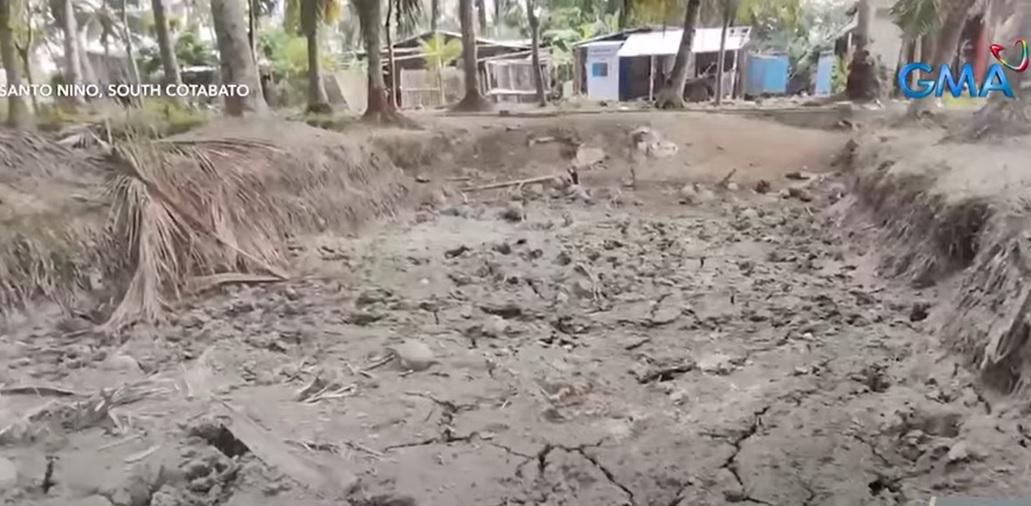Canals, irrigation reservoirs drying up in South Cotabato due to hot weather
Published April 1, 2024 10:44am Updated April 1, 2024 10:59am Some canals and irrigation reservoirs have been drying up in Santo Niño, South Cotabato due to the hot weather. In Barangay Manuel Roxas, there was no more water in the canal and in fishponds, according to a report on Unang Balita on Monday. Cracks were […]


Some canals and irrigation reservoirs have been drying up in Santo Niño, South Cotabato due to the hot weather.
In Barangay Manuel Roxas, there was no more water in the canal and in fishponds, according to a report on Unang Balita on Monday.
Cracks were also seen in the dry soil in some areas.
Even cornfields were affected by the hot weather.
The water level meanwhile in Allah River has gone down. The river is the main source of water for irrigation in South Cotabato and Sultan Kudarat.
Last month, the National Irrigation Administration said the El Niño phenomenon has only affected 1% of vulnerable rice fields in the Philippines.
The damage to agriculture due to the impact of the El Niño phenomenon has already reached over P1 billion, the National Disaster Risk Reduction and Management Council said last March 6.
GenSan, Zamboanga City
Meanwhile, in General Santos City, more than 100 chickens in Barangay Sinawal died in March due to the hot weather, according to a separate report on Unang Balita on Monday.
The caretaker of a poultry farm said on some days, more than 10 chickens died.
In Barangay Tugbungan in Zamboanga City, meanwhile, some duck (itik) farms are affected by the lack of water supply.
A caretaker said they are forced to get water from a deep well.
In February, three ducks died due to hot weather.
PAGASA on Monday said the heat index is expected to be more intense this April. Heat index is the measure of the temperature that a person feels, which is different from the actual air temperature.
PAGASA declared the start of the El Niño phenomenon on July 4 last year.
The El Niño phenomenon is characterized by the abnormal warming of sea surface temperature in the central and eastern equatorial Pacific Ocean leading to below normal rainfall. —KG, GMA Integrated News














